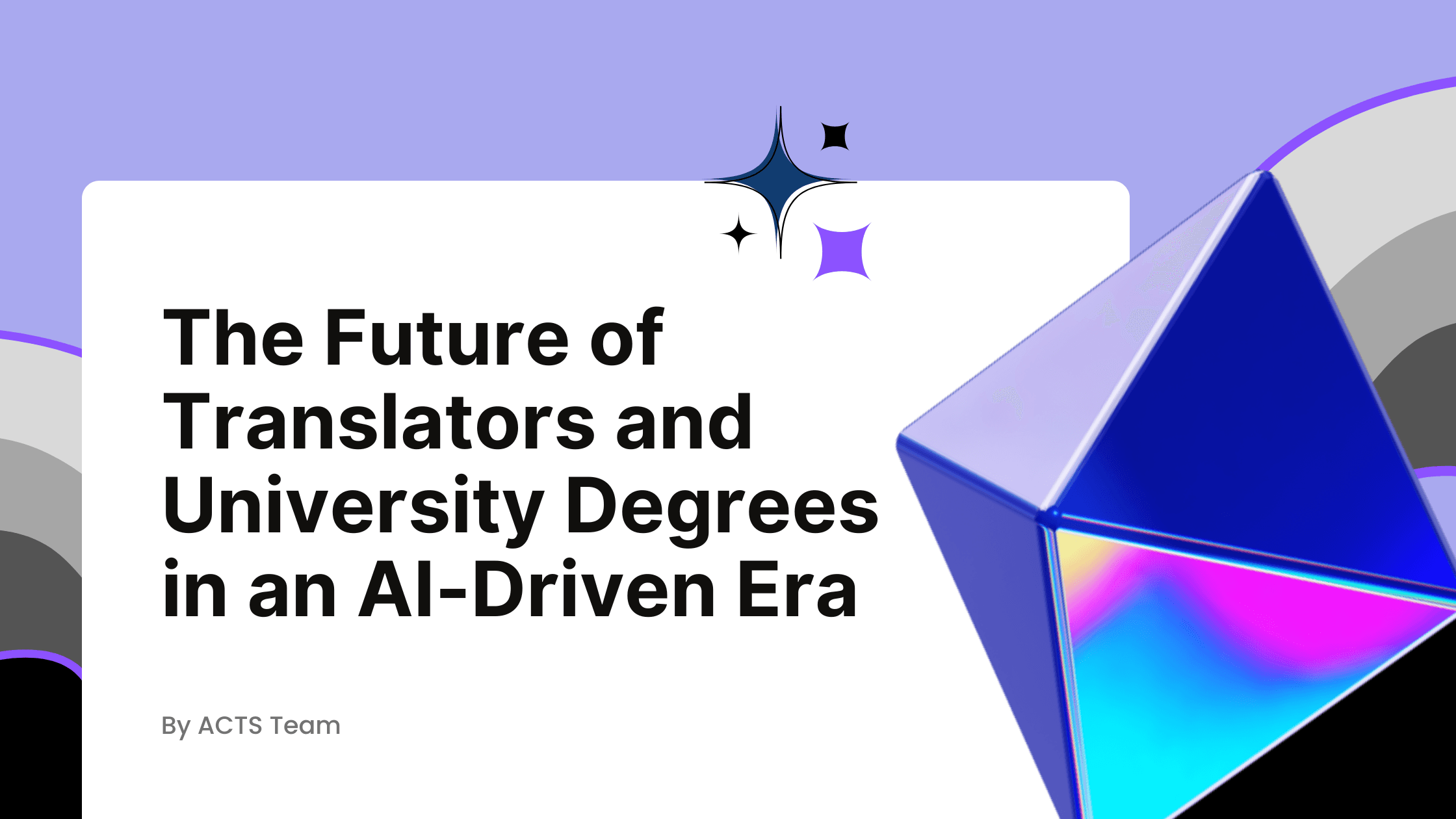
The Future of Translators and University Degrees in an AI-Driven Era
Exploring how AI is transforming translation and redefining the role of human translators, with universities training a new generation of hybrid linguist-technologists.
Introduction: Translation at a Crossroads
Artificial Intelligence (AI) has reshaped industries worldwide, and translation is no exception. With the rise of Neural Machine Translation (NMT) and Large Language Models (LLMs), content can now be translated at a scale and speed unimaginable a decade ago.
But here’s the paradox: while AI shines at the mechanical “what” of translation—words, grammar, and fluency—it falters at the cultural and emotional “why” and “how.” This evolving reality raises critical questions: Will human translators become obsolete? Or will their role transform into something even more vital?
AI’s Strengths in Translation
- Unparalleled speed & scalability: AI can process thousands of words in seconds, making it ideal for high-volume or time-sensitive projects.
- Cost-effectiveness: By lowering translation costs, AI makes global communication more accessible—even for small businesses and individuals.
- Real-time communication: From instant subtitles to live multilingual conversations, AI enables smoother cross-cultural interaction.
- Integration into workflows: Companies increasingly use AI in content management systems, ensuring continuous, automated localization.
For routine and large-scale content, these strengths are game-changing.
AI’s Persistent Limitations
- Cultural and emotional nuance: Machines struggle with metaphors, humor, tone, and emotional resonance—often producing “robotic” output.
- Idioms and local references: Literal translations can strip away cultural meaning.
- Hallucinations: AI sometimes invents convincing but false information—dangerous in law, medicine, and diplomacy.
- Bias in data: Overrepresentation of dominant languages can marginalize minority dialects and communities.
- Complex text handling: Long, intricate sentences or highly technical documents remain error-prone.
This is the “precision paradox”: AI excels at form, but falters at meaning.
Impact on the Translation Industry: Transformation, Not Replacement
The global machine translation market is projected to grow from $1.23 billion in 2024 to $7.16 billion by 2029 (25% CAGR). Demand is exploding, and human-only workflows can’t keep up.
However, this does not mean translators are disappearing. Instead, their role is shifting:
- Machine Translation Post-Editing (MTPE): The new norm, where humans refine machine output for accuracy and cultural fit.
- Higher-value roles:
- Linguistic Quality Assurance (LQA)
- Transcreation for marketing and creative work
- Cultural consulting for global brands
- Specialized translation in legal, medical, or technical domains
This creates a two-tiered market:
- AI for commoditized, high-volume translation
- Humans for nuanced, high-stakes content—often commanding premium rates
Economically, AI is not shrinking the industry but restructuring it, pushing humans into roles where their expertise is irreplaceable.
Universities: Training the Hybrid Translator
Universities are rethinking translation education to prepare students for this new landscape. Degrees are no longer just about linguistic mastery—they now blend language, technology, and critical thinking.
1. Curriculum evolution
- Hands-on training with CAT tools, NMT, and LLMs
- Learning to train and evaluate AI systems
- Courses on prompt engineering and AI literacy
2. Ethics and accountability
- Tackling issues like bias, privacy, and AI “hallucinations”
- Ensuring graduates understand the stakes of unsupervised AI use
3. Human-centred skills
- Critical thinking: spotting errors and biases
- Creativity and transcreation: adapting content with cultural sensitivity
- Collaboration: thriving in hybrid human-AI workflows
The result is a new kind of professional: a hybrid translator—part linguist, part technologist, and always a cultural expert.
Ethical Considerations and Professional Stances
Ethical risks remain central to the debate. AI raises questions about:
- Bias and fairness in representing minority languages
- Data privacy and security when handling sensitive content
- Accountability for AI-generated errors in law, medicine, or courts
Professional associations are clear:
- The International Federation of Translators (FIT): Opposes unsupervised machine translation for sensitive contexts, citing risks of error and deskilling.
- The American Translators Association (ATA): Warns against replacing human interpreters in courtrooms, emphasizing that AI lacks cultural nuance, accountability, and reliability.
Their message is firm: human oversight is non-negotiable.
Conclusion: A Symbiotic Future
The future of translation is not about humans versus machines—it’s about humans with machines.
AI will continue to handle the heavy lifting of scale, speed, and cost. But human translators—equipped with cultural insight, creativity, ethical judgment, and critical thinking—will remain the guardians of meaning and resonance in global communication.
University programs are already preparing this new generation of professionals. The translator of tomorrow is not just a language expert, but a linguist-technologist hybrid, capable of steering AI while safeguarding the human essence of communication.
In short: AI may translate words, but humans translate meaning.